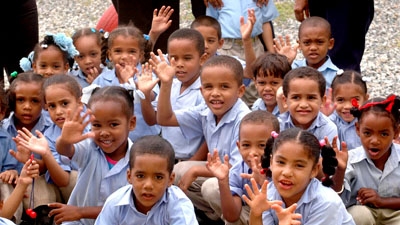Challenge
The Dominican Republic had identified early childhood education as a strategy to reducing poverty. However primary completion rate was only 80 percent. Lack of access to early childhood education was a contributing cause. In addition, the pedagogical model for pre-primary, approved with the 1994 curriculum reform, was not consistently implemented and teachers had not been sufficiently trained to change classroom practices.
In 1997, the Government passed the General Education Law, committing itself to universal access to pre-primary education for five-year-olds and improving coverage for children under five. In 2002, 25 percent of young children did not have access to one year of pre-primary educational services. This situation was worse among the poorest population, among whom only 16 percent were enrolled in pre-primary education.
Solution
The Bank supported the expansion of access to pre-primary education, helping to meeting the Education Law’s mandate of universal enrollment for five-year-olds.
It focused on poor children, who had greater unmet needs of schooling. The project improved the quality of education services at the pre-primary and primary levels. It became the main channel for the implementation of the pre-primary pedagogical model in the classrooms.
This model changed teaching practices and rearranged the schedule of activities and use of time. It also re-organized classroom spaces and the use of work and play. The project enriched teacher training by supporting creative modalities through the establishment of pedagogical groups and regional model centers. It involved parents in children’s education and integrated new technology in pre-primary classrooms.
Results
By August 2011, the project contributed the following results:
- Establishment of 17 regional model centers with 3,000 new pre-primary school places and 108 new teachers. Each model center included an Educational Resource Center, equipped with computers, reading books and audio-visual material to support the implementation of the pedagogical model.
- Construction of 245 new pre-primary classrooms, adding 17,700 places, in existing schools.
- Rehabilitation of 409 existing pre-primary classrooms (25,100 classroom spaces).
- Provision of 3,519 sets of educational materials for pre-primary level, acquisition of 625,276 workbooks for pre-primary and primary levels.
- Provision of furniture for 2,340 pre-primary and primary classrooms.
- Creation of 224 technological corners in pre-primary classrooms.
- Provision of training on the pedagogical model for teachers in all of the regional model centers and pre-primary schools.
- 4,289 teachers trained at diploma level and 4,386 teachers trained on educational content to improve
quality. - Creation of 224 technological corners in pre-primary classrooms.
- Creation of 1,155 pedagogical groups of teachers in 18 regions, including teachers in pre-primary, first, and second grade.
- Creation of 2,216 parent committees in 57 percent of the country’s pre-schools.
- Establishment of inter-sector coordination to implement the integrated early childhood development national strategy.
Bank Group Contribution
The Dominican Republic Early Childhood Education Project was financed by a Bank loan in the amount of US$42 million and a Government contribution of US$20 million.
Partners
The project financed a grant program to stimulate non-government organizations, municipal governments and private sector institutions to prepare innovative projects that improve the educational quality and the health of pre-school aged children.

